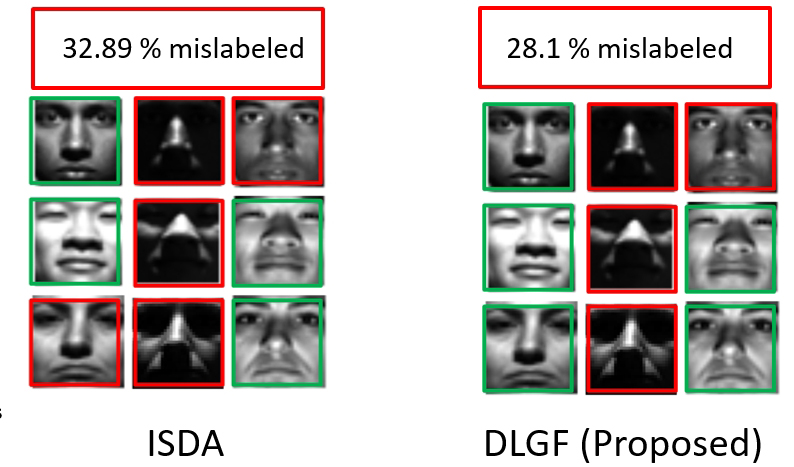
In this paper, a novel framework for semi-supervised learning based on graphs is introduced. We present an innovative approach for concurrently estimating label inference and performing a linear transformation. This specific linear transformation is directed towards achieving a discriminant subspace, which effectively reduces the dimensionality of the data. To enhance the semisupervised learning process, our framework places a strong emphasis on leveraging the inherent data structure and incorporating the information provided by soft labels from the available unlabeled samples. The method we propose ultimately results in an improved discriminative linear transformation. The effectiveness of our approach is verified through a series of experiments conducted on real image datasets. These experiments not only confirm the efficacy of our proposed method but also demonstrate its superior performance when compared to semi-supervised methods that simultaneously incorporate integration and label inference.

This paper presents a new training model for orientation invariant object detection in aerial images by extending a deep learning based RetinaNet which is a single-stage detector based on feature pyramid networks and focal loss for dense object detection. Unlike R3Det which applies feature refinement to handle rotating objects, we proposed further improvement to cope with the densely arranged and class imbalance problems in aerial imaging, on three aspects: 1) All training images are traversed in each iteration instead of only one image in each iteration in order to cover all possibilities; 2) The learning rate is reduced if losses are not reduced; and 3) The learning rate is reduced if losses are not changed. The proposed method was calibrated and validated by comprehensive for performance evaluation and benchmarking. The experiment results demonstrate the significant improvement in comparison with R3Dec approach on the same data set. In addition to the well-known public data set DOTA for benchmarking, a new data set is also established by considering the balance between the training set and testing set. The map of losses which dropped down smoothly without jitter and overfitting also illustrates the advantages of the proposed newmodel.

In this paper we propose a data driven model for an autonomous highway pilot. The model is split into two basic parts, an acceleration/deceleration model and a lane change model. For modeling the acceleration, a Bayesian Network is used. For the lane change model, we apply a Hidden Markov Model. The lane change model delivers only discrete lane change events like stay on lane or change to left or right, but no exact trajectories. The model is trained with simulated traffic data, and validated in two different scenarios: in the first scenario, a single model controlled vehicle is embedded into a simulated highway scenario. In the second scenario, all vehicles on a highway are controlled by the model. The proposed model shows reasonable driving behavior in both test scenarios.

Realistic image forgeries involve a combination of splicing, resampling, cloning, region removal and other methods. While resampling detection algorithms are effective in detecting splicing and resampling, copy-move detection algorithms excel in detecting cloning and region removal. In this paper, we combine these complementary approaches in a way that boosts the overall accuracy of image manipulation detection. We use the copy-move detection method as a pre-filtering step and pass those images that are classified as untampered to a deep learning based resampling detection framework. Experimental results on various datasets including the 2017 NIST Nimble Challenge Evaluation dataset comprising nearly 10,000 pristine and tampered images shows that there is a consistent increase of 8%-10% in detection rates, when copy-move algorithm is combined with different resampling detection algorithms.